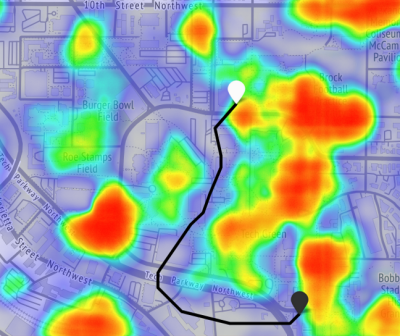In the next few months, we should be hearing from the Federal Aviation Administration (FAA) about the potential regulation that would allow uncrewed aircraft, or drones, to fly beyond the visual range of the operator in what is known as BVLOS (Beyond Visual Line of Sight). Last September, during Commercial UAV Expo in Las Vegas, we heard from FAA officials that the NPRM (Notice of Proposed Rule Making) was scheduled to be released in August 2024, opening the door for a potential formal regulation that everyone is calling Part 108.
 This new FAA rule will open the doors to new business opportunities and will also expand the scope of existing applications, by extending mission times and area covering. But allowing non-piloted aircraft to share the National Airspace (NAS) with airliners and general aviation (GA) aircraft will present new challenges and will be a direct threat to the excellent safety record of the aviation industry in the USA.
This new FAA rule will open the doors to new business opportunities and will also expand the scope of existing applications, by extending mission times and area covering. But allowing non-piloted aircraft to share the National Airspace (NAS) with airliners and general aviation (GA) aircraft will present new challenges and will be a direct threat to the excellent safety record of the aviation industry in the USA.
So, how can we assure that piloted and non-piloted aerial vehicles will not collide in mid-air once we add hundreds if not thousands of small drones to lower altitudes? In our opinion, by making sure that every pilot joining the existing system will behave in the same way in a professional and safe manner. This burden will fall principally on drone pilots as they are joining a group of professionals that already have very high standards and low accident rates.
Today, almost every pilot flying in the NAS has some sort of Safety Management System (SMS) to comply with, perhaps with the notable exception of small, single engine aircraft that fly using visual flying rules (VFR) mostly recreationally.
Drone pilots will have to understand how to mitigate risk by adopting risk mitigation or management practices that would ensure that every time they takeoff and join their colleagues in the sky, everyone is performing at the same level of safety and professionalism.
Recently we watched a fascinating video on LinkedIn, in which Guy Maalouf, a PhD candidate at the University of Southern Denmark, explains SORA 2.5, the Specific Operational Risk Assessment used in Europe and the UK to quantify the potential risk of a particular flight. SORA was developed by JARUS (Joint Authorities for Rulemaking of Unmanned Systems) as a framework for uncrewed aviation to systematically evaluate each flight.
We had an exclusive interview with Guy, in which he described the importance of using a tool like SORA in BVLOS flights.
“If we ever want to see the promised reality of crewed and uncrewed aircraft sharing the skies, drone pilots must adopt a safety mentality deeply rooted in a systematic approach,” Guy said. “In the dynamic landscape of the UAS industry today, understanding SORA is becoming increasingly pivotal.  Both the EU and the UK are steering towards this methodology, making it a compass for our journey in unmanned aviation.”
Both the EU and the UK are steering towards this methodology, making it a compass for our journey in unmanned aviation.”
In the US, the favored approach is the implementation of SMSs, and the leader in training and promoting a systematic approach for uncrewed aviation is USI, previously known as Unmanned Safety Institute. We spoke with its CEO, Josh Olds, for a comment on the importance of SORA.
“SORA 2.5 is a valuable safety tool, and we at USI leverage its approach when we design our curriculum and training frameworks,” said Josh. “For commercial operations under Part 107 that present increased risk and/or are large-scale commercial UAS operations, USI recommends the implementation and use of an SMS. However, for UAS programs conducting BVLOS operations, we consider foundations of SORA included in a SMS to be a mandatory and integral part of the program’s standard operating procedures for risk mitigation. All organizations using Remotely Piloted Aircraft Systems (RPAS) should create a culture of safety through a scalable SMS commensurate to the scale and complexity of its operations. USI’s approach to safety is very much aviation centric and recognizes the inclusion of technology as a risk mitigation tool, with the understanding that software-based safety initiatives cannot be relied on blindly as ‘the safety solution’ but should be considered a complimentary addition to the operator’s ‘best practices’-based program. There is still no substitute for excellent hiring, training, and continuous improvement practices if the UAS operator’s objective is a safe, sustainable, and secure drone operation that maximizes the Return on Investment for their specific objectives.”
The Ten Steps of SORA are:
1. Concept of Operations (CONOPS)
a. What do you want to do?
b. Where do you want to do it?
c. Which UAV are you using?
2. Intrinsic Ground Risk Class (iGRC)
a. Operation Area
b. Adjacent Area.
3. Final Ground Risk Class (GRC)
a. Strategic Mitigations for Ground Risk M1(A).
b. Visual Line of Sight (VLOS) – Avoid flying over people M1(B).
c. Effects of UAV impact dynamics are reduced M2.
4. Initial Air Risk Class (iARC)
a. ARC a -Negligible encounter rate.
b. ARC b – Low encounter rate.
c. ARC c - Medium encounter rate.
d. ARC d – High encounter rate.
5. Strategic Air Risk Mitigations
a. Operational restrictions.
b. Airspace rules & structures.
6. Tactical Mitigation Performance Requirements (TMPRs)
a. Detect nearby aircraft,
b. Decide how to avoid,
c. Command the USA,
d. Execute separation,
e. Feedback for assessment.
7. Specific Assurance and Integrity Levels (SAIL)
a. A matrix that mixes Final GRC with Residual ARC.
8. Containment Requirements
a. A matrix that mixes SAIL with Adjacent Area Final GRC.
9. Operational Safety Objectives (OSOs)
a. Technical issues with the UAV.
b. Deterioration of external systems affecting the operation of the UAV.
c. Human errors.
d. Adverse operating conditions.
10. Comprehensive Portfolio
The challenge that we face in the uncrewed aviation industry is that this systematic approach will guarantee that procedures are at par with the safety of crewed operations, but the money involved in drones is not even close to the vast resources, both economical and human of piloted operations. One of the advantages of using a drone versus using a typical aircraft with pilots is cost, but with inexpensive comes cutting corners and the potential abandonment of safety for affordability.
“Yes, definitely increased safety comes at an increased cost,” said Guy. “Uncrewed pilots will have to change the mentality and invest vast amounts of time implementing a very rigorous approach and if they are not being paid accordingly, some pilots might not go through all the stages, and therefore operations will not only be illegal, but also dangerous, and that’s precisely why it’s vital to put systems and tools in place that ensure that risk assessments are conducted properly and efficiently.”
As we can see, we can go through the theoretical exercise of implementing a perfect system like SORA but if we do not raise the level of financial compensation of uncrewed pilots to decent levels, we will be faced with the fact that they might ignore steps and cut corners in order to afford to fly. The industry that was born out of the huge savings of using drones versus using piloted aircraft will now have to sacrifice some of those savings in order to have safe skies.















Comments